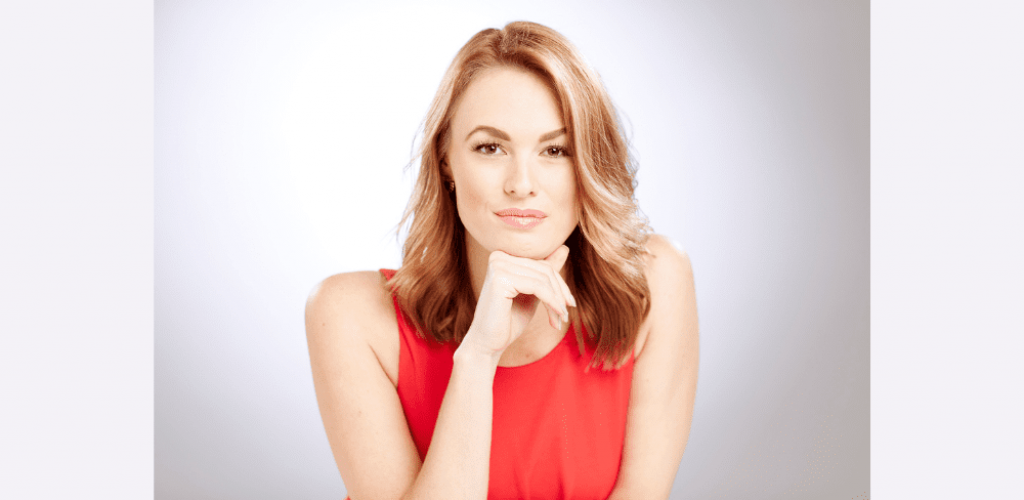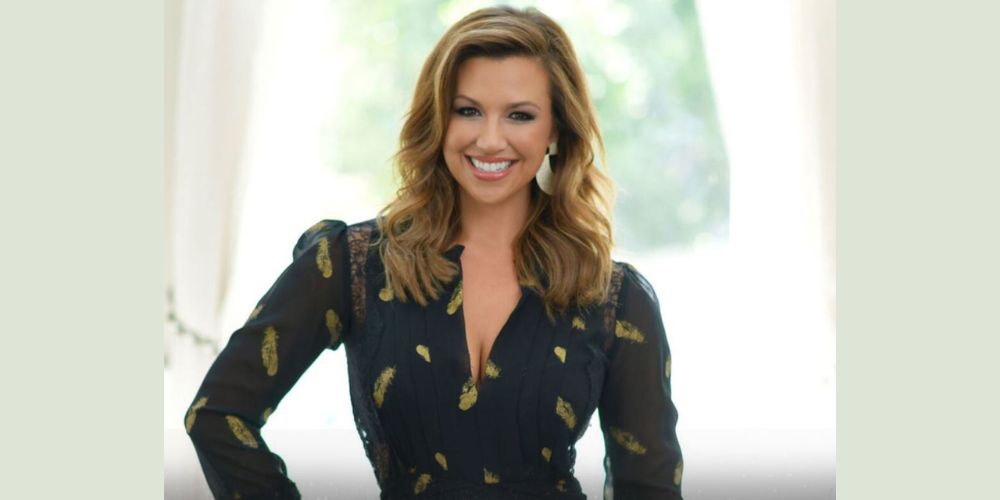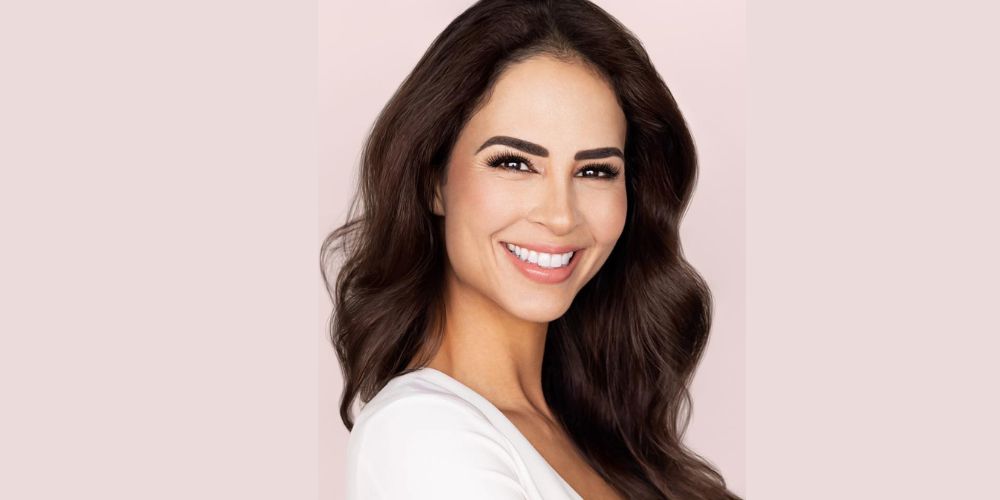Raj Girn: In this third week of March, where our theme is Branding and Marketing, this week’s two-part series is entitled ‘Why Everyone Needs to Marry Their Mission with Their Brand Identity.’ My guest is the founder of Brandwise Media and personal branding expert Kait LeDonne. And here’s a bit about her.
Kait’s agency is based in New York and specializes in building executive- and author-driven personal brands using content marketing strategies through social media. She has authored the book ‘The Attraction Magnet: The Seven Insider Secrets The World’s Best Brands Use to Attract Customers Who Can’t Wait to Buy From Them.’ Kait is regularly featured in national and international publications as a commentator on celebrity and corporate brands and her company, Brandwise Media, has developed one of the first online courses centered around LinkedIn called ‘The Influence Academy,’ which teaches executives how to position themselves as thought leaders in their respective spaces.
Without further ado, please welcome to the show, Kait LeDonne.
Here is Part One of our conversation:

Raj Girn: Kait, what an absolute pleasure to have you on this show. Everybody seems to think they know what branding means, and it’s almost become indicative with everything that we do in life when we show up. I want to have the opportunity to just really lay it down and deep dive about actually what branding is and its use both on a personal and on a professional level. So, thank you so much for agreeing to be on the show. Let’s start right at the beginning. What is branding?
Kait LeDonne: It’s a good question. There’s the corporate definition and there’s the ones that I’m going to give everybody, that are in my opinion, a little easier to follow. So corporate branding, or as it’s traditionally defined, is something in the ballpark of the perception you want a consumer or an audience member to feel when they think of you or your brand or a feeling that you want them to experience when they think of you or your brand.
How I break it down for people when we work with them is, who are the people you’re trying to help and how do you help them in a unique way? What’s the problem and how do you help them in a unique way? Again, it feels a little bit more tactical to work through that than something that can feel ethereal – like what perception do you want to create? That can feel very hard to tackle. But it starts with the fundamental question who are you trying to help? Reverse engineer it.
The best part about branding, when it’s done well, is it actually has nothing to do with you or your company and everything to do with the people you’re trying to serve. And that in and of itself takes a lot of that pressure off of you. If the one thing you do is just to get to know the people you’re trying to serve better than anybody else knows them, I would argue you’re 90 per cent of the way there on your brand because you’re starting at the right place. Most people start at the wrong place, which is let’s go introspective here. Let’s spend so much time figuring out ourselves that we’re not actually focused on the end-user and the people we drive value towards. So that’s my definition again: who? And be specific about this and we’ll talk about it later. Who are you trying to help? What’s the biggest challenge they have as it relates to you? What’s the unique way you help them do that?
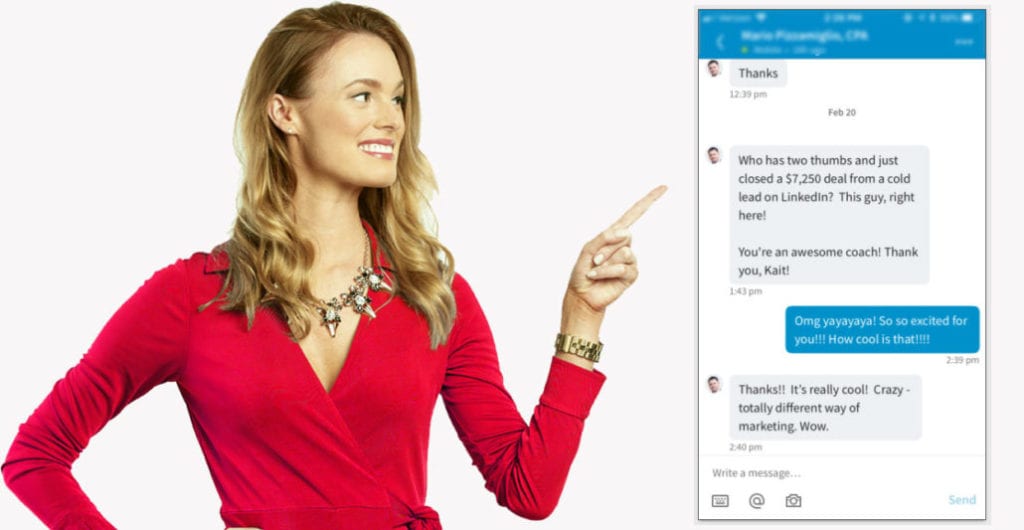
“The best part about branding, when it’s done well, is it actually has nothing to do with you or your company and everything to do with the people you’re trying to serve.” ~Kait LeDonne
That’s incredible. I don’t think I’ve actually heard anyone say it so succinct and clear and simple as that. For all of you guys joining in, I hope that you are scribbling away. And if you’re not, I really do ask you now to go grab a pen and paper or even rewind this back. It’s really important that you understand what this is about, because in today’s world you can’t not show up and you are showing up even when you think you’re not. So understanding what that actually means for you and for your clients is extremely important.
Kait, this brings me to another question, and I feel that you’ve answered it, but let me just ask you anyway. What’s the intention of branding if the intention of marketing is to sell and the intention of selling is to generate revenue?
I love this question. First of all, I love, love, love this question. I think Einstein said if I was trying to solve a problem and I had an hour to do it, I’d spend 50 minutes finding the right question and the answer would appear. So, first and foremost, thank you for this question. I’ve never received it and it’s so great.
The intention of branding, if marketing is to sell and selling is to generate revenue, is to make sure you’re selling the right thing to the right people. So as obvious as that may seem, it doesn’t always play out like this. Let’s break it down in another way. I want to sell shoes, so I’m going to market shoes so I can make revenue. Well, there’s quite a big difference between selling a sneaker to a basketball player that lives in Philadelphia than there is to selling a sandal to a woman who lives in France. That’s a vastly different brand right there. And so you need to get clear about that because it’s going to inform the marketing strategy and the sales strategy. And again, you’ll hear me come back to this key statement. It’s about knowing who you’re trying to sell that product to and what they fundamentally and psychologically want from that product or service that you’re selling. And that is going to clear up so much of the marketing strategy for you.
“The intention of branding, if marketing is to sell and selling is to generate revenue, is to make sure you’re selling the right thing to the right people.” ~Kait LeDonne
So do you feel, Kait, based on what you just said there, that branding is the emotional connection that a person makes?
It certainly is the vehicle to drive one, yes. You want to be clear. When a lot of people hear Volvo, they think safety. That’s the first gut emotion. I feel safe in this car. And it’s because Volvo has a very clear brand strategy to the exude that emotion. So it’s the outcome. I wouldn’t say it’s the way to get there. There’s a whole host of things you can do to drive that outcome, but it’s certainly the outcome of a good brand strategy.
Okay, so I hope you guys are listening in and paying heat of a lot of this information. Because this is where we start to understand branding and where it fits in to the bigger picture here and just some of the minutia details that oftentimes get missed in the mix, which is the reason why you get failure in presenting your brand and what it represents to your consumer, that connection isn’t quite made. That’s the magic of hiring a brand strategist, a branding expert like Kait.
Kait, tell us how people can get a hold of you before we move on.
Sure, so the biggest way I would say is LinkedIn. Actually, just looking me up, seems to be my mecca of social media. We work with a lot of thought leaders in the platform and the personal brand strategy. So that’s the easiest way. And then if you want to visit me on the web brandwisemedia.com is the place you want to stop by.
Brilliant. All right, so let me just dive into the next question for you, Kait. Where in the chain of the business journey, from the ideation phase to organic or paid advertising, does brand strategy play its part? I feel you answered that as well, but focusing razor-sharp into this question is going to be important for a lot of people that can’t really differentiate between each of the phases there.
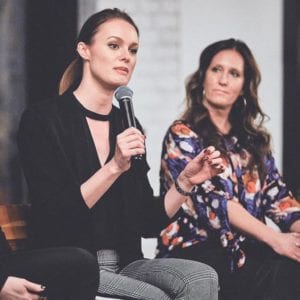
I think a lot of people would traditionally say that it’s fundamental in the beginning. And I would not argue against that. It’s really core that you are creating that identity around who it is you’re trying to serve from the onset of a business, a product line, a service. The problem then becomes that people leave it in the beginning. Great, check that box, got our mission, got our vision, got our values, got our visual assets and our brand identity, we’re done. Now, we can go out and market. And then the marketing strategy breaks down because they’re not continually returning to that brand process throughout. In my company, we actually run through an ideal client avatar exercise every quarter. And it’s not because our ideal clients shift every quarter. It’s because we just get to know them even better. That helps us get even sharper and drive more ROI from our marketing strategy.
If you want to correlate it to any kind of relationship you have: in the first year of dating you’re going to know somebody about X per cent, in the second year of dating you’re going to know him phenomenally, by the time you’re married 40 years, you know what that person wants more than they do. You’re like, I already know you want orange juice, get off my back. That is okay. And you know them like the back of your hand. That’s why you want to revisit branding again and again and again, so you can anticipate the needs and shifting needs of how that target market is evolving rather than just leaving it as a line item to be completed.
Every time we’re brought in to assess a marketing strategy, it usually never has to do with the tools in and of themselves that people are using like PPC or SEO or social media, insert strategy here. It usually always has to do with a core group. Who are you trying to reach? What is their fundamental problem and how is it that we’re achieving it? If you answer those three questions every time your campaigns are going to be more successful, your sales are going to be more successful, your conversions are going to go up. People don’t come back to that and come back to that like gospel and they should every single day.
Right. Absolutely agree with that. You know, I find that oftentimes when I work with clients it’s a lot of the language around branding that they get confused about. So it becomes a lot more difficult for them to move through the process. And obviously, you have a process in this. Let’s touch base on some of the brand-centric terms so that people who maybe haven’t really focused so much on either the conscious level of what branding is, even though we all subconsciously do it on some level. I’m going to hit you up with a few terms if you can explain to people what they need to know out of what those terms mean so that when they go to market, perhaps themselves or they look to hire working with an agency like yours, that they at least are clear on the minutia differentials. The first one is brand vision. What would you need people to know about what that means?
I think this is one of those areas that people get confused on because it’s used interchangeably with a mission statement. There’s the brand language and then the corporate language. For me, and again how I keep everything clear and succinct is, the vision for my company is what we hope our world in the world looks like 10 years out if we achieve what our mission is. It’s this future paste picture where, if I’m at this point and we’re servicing these kinds of people and we’re generating this much revenue in 10 years, we’ll have known that we had a successful mission because we know what the end destination looks like.
And then there’s the mission statement, which is usually simply asked, why is it that you exist and who are you trying to help in its simplest iteration. The problem again with mission statements, as I share often and continually come back to this, is that people will oftentimes make it all about the company. To be the predominant seller of X, Y and Z. Well, great for you. You’re telling me nothing about what you’re trying to do for people. All I hear is that you want to be top of your industry and X, Y and Z is our mission and lead with extreme customer service. And you’re just like, that could be any corporation ever. You need to have a mission statement that talks about what it is you’re trying to do in relation to the people you’re trying to do it for. And that’ll help pave the brand vision, which is then how does the world look three years out, five years out, 10 years out if your successfully caring about that mission statement.
Why do you feel, Kait, that it is important to be able to know that from the get go? Why do people need to know that?
I think, and I’ve certainly learned this as I’ve scaled my business up, I have that in my head before as I was a consultant and now that I have 11 people, it’s like if you said: I want to go on a trip and then you never defined where the trip is. You would never know if you got to the destination, if you didn’t do that, so you could be spinning in circles. And unfortunately, a lot of companies do because they haven’t defined, okay, we’re going to South Africa. And when we hit those beaches and we’re in Johannesburg or whatever, we’ll have known that we made it.
Then we can look at the next 10 years out. And again, I think a lot of people think this is a set it and forget it thing, without realizing an organization is comprised of humans and humans evolve, an organization evolves, the markets evolve. This isn’t something that you’re done and it should always be the case. You should feel that there’s freedom in changing it. Now if you change it too much your people are going to get lost both internally and externally. But if you achieved it in three years, five years, great. Then you set out to do what your mission is pointing you to do. And then you want to set the next vision statement in terms of scaling the company or taking on the next challenge.
So, I guess this is where a brand story really helps to make it clear what your brand vision is. Let’s talk a little bit about that. How is brand story different from a brand vision and what is a brand story, I guess, would be my question here.
It’s a great one. So if you’re thinking about it in terms of time perspectives, the vision is a future-based event where we want to go, what it’s going to look like when we get there. The mission is how you’re doing it or what you’re doing to get you to that vision. And the story is the past. How do we even turn up here with this vision to get this mission to go and achieve the vision that we’re going to do? And the more relatable you can make that origin story, the better.
“The vision is a future-based event where we want to go, what it’s going to look like when we get there. The mission is how you’re doing it or what you’re doing to get you to that vision. And the story is the past.” ~Kait LeDonne
There is a company called – I love their origin story – Marine Layer. They make t-shirts. And I remember at one point, I think they’ve since iterated it, but their brand story on their website was it all started the day my girlfriend threw out my favourite t-shirt. That was the origin story. And she said, “I’m sorry you can’t wear this ratty t-shirt anymore.” And he was saying, “but it was so comfortable and lived-in and I loved it” and she was saying “I’m embarrassed to go out with you.” So we started this company to give that lived-in and really soft feel of a favourite t-shirt while not embarrassing your girlfriend. It was maybe five sentences long, but it just really, again, did a lot of things very, very smartly, which was authentic to their story, had a personality behind it, but also was telling the story of the people they wanted to reach, which are probably people have the old ratty t-shirts. They want to upgrade their t-shirt game, but they want to feel comfortable. So it was very authentic to their beginnings while also drawing a parallel to what their audience or core customers were probably experiencing in their lives. And human beings connect through storytelling. If you haven’t come up with your brand story and it’s not showing or explaining the core problem that you face, that had you come up with the business to then help other people face that same problem, you’re missing an opportunity to become an entity or a person that people know, like and trust.

Right. Oh, my gosh, that’s so powerful. I just want to throw it out there again for anyone that is just joining us Kait, to tell people how they can get a hold of you.
LinkedIn, always LinkedIn. I’m extremely accessible there. The website is brandwisemedia.com.
Brilliant. So let’s then jump into creating a brand identity. What is that? What do people need to know about that?
I think the important thing when you’re talking about a brand identity, and you hear a lot of different terms for this, the style guide, the brand, but if you think of . . . I always tell people it’s like the DNA of your brand. So the reasons that humans can suffer injuries or grow and not look like a completely different person is because there’s that core genome and DNA that your body refers back to to make sure everything’s on track as it grows. And so you want to think about that for your company too. You want to document how does the company sound? What is our tone? What is our voice? What’s the company’s personality?
A company that has a really great style guide that I implore everybody to reference is MailChimp. They refer to the chimp as their company mascot and they talk about the chimp’s voice and they’re like, the chimp is clever but not silly, smart, but doesn’t speak above people. It’s like this very, very nuance thing of, oh, I really, really understand how this company communicates. But without fail, you definitely want to make sure you’re documenting the personality, the tone, colours. As particular as it is, get your three to five core colours down so that as people start designing on behalf of the company, there’s a steady colour palette. I know that sounds so obvious, but you’d be amazed even I myself grappled with that for years.
You definitely want to be clear on the logo, in the way that you’re using the logo, any other brand assets, if there’s illustration. And then, this is a sneaky one that not a lot of people pay attention to, you want to outline your fonts. The quickest way to actually disintegrate trust in design is to have a lot of fonts on one page or one document. Generally speaking, you want a headline font and then a body font and then use that throughout all of your communications because it’s going to keep your brand air tight. And then a big aspect of this that you want documented, that this is a whole other conversation that we may get to, is what are your brand values. Values is a part of the brand that I think is becoming more and more important as people realize the authenticity of branding, but not a lot of people spend the right amount of time on, or the effective exercises to really unearth what those values are. But values drive everything for a brand. They’ve been the core of our brand growing very quickly.
So why don’t we address that right now? What do people need to know about brand values?
When you look at a group of people, and even if you think of your inner circle, you’re often going to find that people hang out with people that they have a shared value system with. And so, again, if these aren’t documented, but further than that, alive and well in your organization, you’re not going to have that filter of is this a partnership, whether it’s with a client, a strategic partner or an employee you’re going to hire, to make those decisions so everything is working really, really cohesively together.
I was on the phone with a fellow entrepreneur earlier today and she said the biggest thing I got out of reading a book about how to scale a company is values. We had written them down a while ago, but we weren’t talking about them. And now it’s the quickest way I decide, do I want to take on that client? No, they don’t have similar values, they’re going to be a pain in the neck to work with. Do I want to hire this person? No, they don’t fit the value structure of the organization.
And so for us, we have six core values. And every single day my team and I meet and we have what we call a daily huddle, which is about a 15 minute thing where you run through: What’s a win from yesterday? What’s your top priority today? Give us your core value shout out. What’s your key performance indicators you’re in charge of? And then do you need any help or support? It’s a really great way that everybody comes together very quickly to make sure we’re on the same page. The core value shout part is we’ll say, “Oh, so-and-so exemplified our value of excellence yesterday when they did this for our client.” And so every day it’s like what’s important to us. What are we going to prioritize? What are we going to say yes to? What are we going to say no to? It’s the easiest way to filter that. Is it in alignment with our values? If so, yes, we can feel good about moving forward. If not, you probably want to think about that because nine times out of 10 I would assert a lot of your headaches, whether it’s problem clients, problem employees or problem partners, come because you didn’t that share values closely enough.
Right. Such powerful, differentiating factors between each of these terms. Kait. Thank you so much for sharing this. I’m sure that most of the people that are listening in haven’t really delved as deep as this to understand the differentiating factors between each of these and how they’re linked together. So thank you so much for that. There is one final one that I want to throw at you, and that’s brand equity. What could you share in regards to that?
So marketing strategies, they’re really easy to measure i n some cases; we’re going to spend this amount on pay per click advertising. We want to see this many conversions from it. Given that branding really envelopes the whole process to end from how you treat internal folks to how you treat external folks, it informs everything. It’s really hard to measure for people. How do we know if the brand is doing a good job or not?
Brand equity is more or less the amount of awareness and real estate you hold in people’s minds. You can use things like net promoter score to help with this. How likely is somebody to recommend your company to a friend, is a really good way to quickly assess where is our brand equity? Are we performing? A couple of ways we do this is net promoter score, so every time we send the client deliverable, we send them a coordinating survey that says, how happy are you with the service? How likely are you to recommend us to a friend? And we look at impressions to see how much are we coming up on people’s radar?
“Brand equity is more or less the amount of awareness and real estate you hold in people’s minds.” ~Kait LeDonne
It’s really, again, the amount of positive, because there is certainly a difference between the amount you’re on people’s minds and the amount of positive interactions and feelings you have in people’s minds. To give an example of brand equity in a negative way, I would say a lot of people are constantly thinking about their cable company because it’s a necessity. You need WiFi, you need cable, you need TV. Oftentimes that’s not a positive brand association, unfortunately for the cable companies. Even though you’re top of mind for people, maybe because you’re a bit of a monopoly, you’re not having a good positive experience in somebody’s mind. So it’s how often are you on somebody’s mind and how closely are those thoughts positive about your brand.
Wow, that’s a lot to think about, folks.
I will say this, it feels really overwhelming, but start small. For us it was just what quick way we can see if people are happy with the brand or not? And it was, okay when we send over social media to a client, we’re just going to have one question. Would you recommend us to somebody? And if even one person says, no, we’re like ants on a cupcake, we swarm it. Why? What’s going on? What can we do? Is there a value breakdown? Is there something that we missed here? And it gives you data to quickly assess what about the brand is not working as it should.
From a data points perspective, since you’ve touched on that and you’ve mentioned also that a lot of people don’t know how to equate success with branding, basically what you’re saying is ask the questions.
If the intention of branding is to make sure you’re serving the people you want to serve in a positive way, it follows that the only people that can tell you if you’re doing that are the people you’re serving. It almost can’t be a self-assessment. And so the good news is and it’s easy to do and you’re going to get unfiltered feedback. Internally will probably have some biases against that. I’m going to be harder on the organization because I see all the flaws, perceived flaws internally, or I’m going to be a little bit nicer to the organization because I work here. But a customer is always going to give it to you straight, especially if you have shared values with them. They’re going to want to see you succeed. They’re going to be quite vocal about when you’re maybe not succeeding as you intend to succeed.
“If the intention of branding is to make sure you’re serving the people you want to serve in a positive way, it follows that the only people that can tell you if you’re doing that are the people you’re serving.” ~Kait LeDonne
Which is what you need to know, right?
Yes. And proactively at that. We don’t want to wait until somebody has an issue with the company, which is why we send out those surveys every single time we talk to them. Our theory is, you know what, if it’s overkill they don’t need to fill it out, but if they have something to say, we’ll know we can get ahead of the problem instead of trying to fix it retroactively.
Absolutely. So this brings me to another area that I’d like to deep dive with you, Kait. All types of branding can be funnelled into seven basic types. Now, I’m sure you may have others that you can add to this, but let me just give you the ones that are generally benchmarked. So we have product, corporate, service, personal, geographic, cultural and retail branding. And oftentimes many of these overlap each other. They’ll be more than one that group together.
I want to get your head around this. Can you share an example, either of each of them or of the top few that generally are the ones that grouped together in terms of anyone out there that’s new to the branding game to give them some information and bring them up to speed. So do you want me to run through them one by one?
No.
Okay, let’s handing it over to you.
I’m going to make something that’s complex, hopefully a little bit simpler for us. It’s more important. It’s unfortunately a little easier to do this in a visual format. It’s less important to define them individually and more important to think of them hierarchically. The thing that happens with a brand is it starts to grow is that new product lines are added, new services are added, new people are added to the company. And then again, you can think of all these different types of brands as individualistic. But the most useful exercise in my experience is almost mapping them out like an org chart. We do this for our organization’s people. We don’t do it for our brands.
If you think of it like – let me think of a big brand that has a lot of products underneath of it. You could think of a large scale brand like Procter & Gamble. They make a lot of products. So that’s the corporate brand. Then if Procter & Gamble, and I don’t think they do, had a figurehead who was really prominent, they would be the personal brand in the executive suite. So Procter & Gamble, the corporate brand, then Procter & Gamble has product lines underneath of it. That would be toothpaste, shampoos, this underneath of the product lines there’s actual individual products, Colgate, this brand of product line. And then underneath of that, it would differ based on the territory you’re selling it to. If you’re selling Colgate toothpaste to somebody in one part of the world versus somebody else, you’re going to highlight different features.
It’s more important to understand how those things stack up for you than it is to understand the definitions of each of them. But generally speaking, you’re going to look at it as corporate, followed by the product or service line, followed by individual offerings underneath of that, followed by geographic or territory. But for some people it may shift because geographic or territory supersedes a product line. And again, I know that’s a little bit complex, but think of it like if you, let’s just use services because we’ve talked a lot about products here.

With my company, there’s my personal brand. As the founder of the company, I’m very noisy on social media about branding. I have a personal brand. I’ve also empowered all of my employees to as well. Please write articles for LinkedIn and you’ll write for our Corporate Brands newsletter. It’s important that people see your faces. So, they have personal brands as certain experts in our agency. But then we have the overall corporate brand of Brandwise and then we have service lines underneath. We have services we help executives with, we have services we help business authors with, and then we have services we help advertising and PR agencies with. Underneath of those, then come different types of services and products. So I have an online course about mastering LinkedIn that would be under the executive bucket, a little bit the author bucket, but definitely for the PR and ad agencies.
It was feeling extremely complicated to deal with my employees’ personal brands, my online course brand, my service brand, my personal brand. But when we drew it out on an org chart of where each of them fits, it becomes very clear to see the priority and the overarching brands and the coordinating things like values that play into all of these things. I hope that helps. But, I would encourage you, if you’re feeling confused at all about branding, do the exercise of mapping out hierarchically where different components of your organization are, and then you’ll see which brand strategies flow downstream into the ones that are below.
Absolutely. You know, it’s interesting Kait, because the easiest way to be able to see whether it works or whether there’s something missing is to create diagrams. It is the easiest way, because when you have it all in a word doc, oftentimes you can miss the link, you can miss what’s missing or maybe there’s too much of something. But when you draw it out, and I always say this to my clients as well. Okay, now you’ve written it in a word doc. Now, can you put it into a diagram? Let’s look at this piece and see if it all makes sense. So it’s wonderful that you’re sharing that as well with everyone.
“The easiest way to be able to see whether it works or whether there’s something missing is to create diagrams.” ~Raj Girn
Thank you so much for staying until the end, guys. I really hope you enjoyed the show and will action the many insights that were shared. If any of you doubt the power of leveraging brand strategy in business, I hope Kait and I were able to swing you over to our side. If you don’t know where to start, I would love for you to contact Kait on LinkedIn or at the Brandwisemedia.com website or even hit me up at Consult with Raj Girn at TheOpenChestConfidenceAcademy.com, so either of us can steer you in the right direction.
If you found this show to be helpful I’m so glad. I would love your support by subscribing to this podcast. On your Apple and Android platforms search The Transform Your Confidence Show, our YouTube channel at The Open Chest Confidence Academy, and if you’re an avid reader like I am, we’ve also transcribed every podcast into a blog which you can access at TheOpenChestConfidenceAcademy.com/media/our-media. And also please hop over to our private Facebook group at Transform Your Confidence, where there are networking opportunities as well as knowledge and resources about mindset, media, communications, branding, marketing, leadership and advocacy for busy executives and entrepreneurs who are seeking to elevate the quality of their life. And as always, thank you for tuning in and I look forward to seeing you in our next episode. And until then, take care of yourself.
To contact Kait LeDonn: LinkedIn. Instagram, Twitter, Facebook



